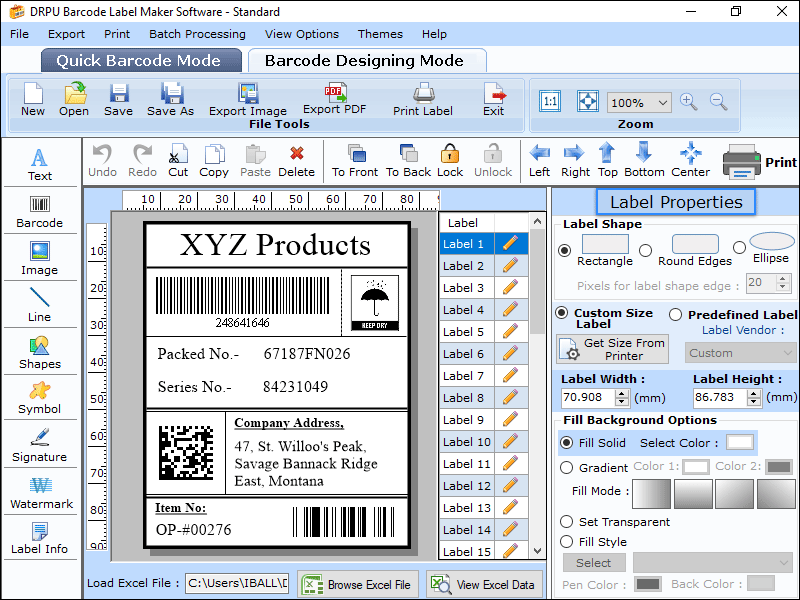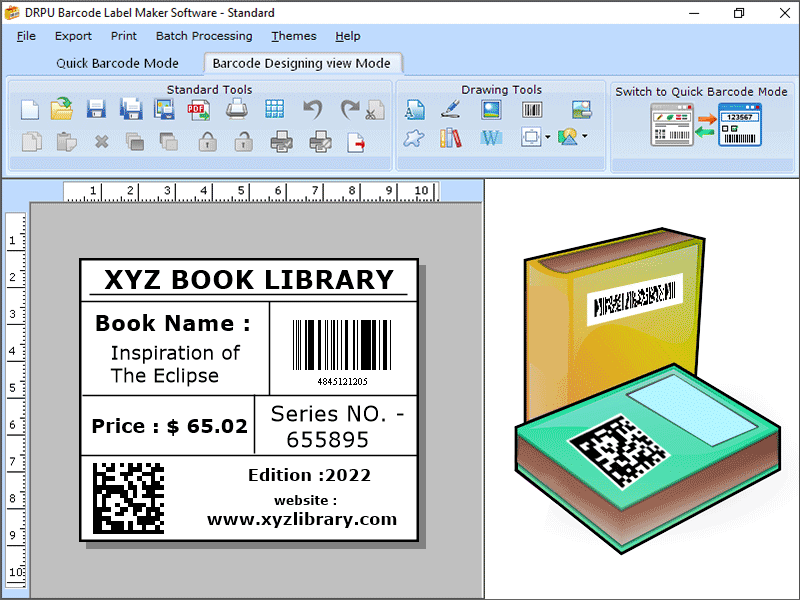1D or 2D barcode? Which is Better?
If you are choosing the best barcode system for your business then, you should look at various factors such as label design, resistance, etc. and after that, select the barcode that is perfectly suitable for your business.
These are also known as linear barcodes and are represented as a set of vertical black bars separated by white spaces on the horizontal axis. These black bars and the white spaces are different from each other in thickness and the data is stored in the barcode-based upon the specific order of thin and thick bars and spaces. The deeper and broader the barcode, the more data it stores. There are different types of 1D barcodes like UPCA, UPCE, EAN18, Codabar, Code 39, etc.
1D (or linear) barcodes are the traditional barcodes that consist of a series of parallel lines and spaces. They can encode a limited amount of data, typically only a few dozen characters, such as product codes, serial numbers, and price information. 1D barcodes can be read by a barcode scanner in a single direction, from left to right or right to left, using a laser or LED sensor.
When an optical scanner directs a LED light on a 1D barcode, light is reflected backward dependent on the spacing and dimensions of the black bars. The reflecting light’s pulses are transformed into binary codes, which are decoded to disclose the product’s unique identification number. It can read the data of the 1D barcode from left to right or vice-versa. But, 1D barcodes are capable to store only linear data, which should be scanned from particular angles. Read More
➲ Create 1D Barcode
You can create high-quality 1D barcodes with the help of the our free Standard Barcode Software in less time without applying much effort. In this software, you can create different types of 1D barcodes such as Codabar, Code39, Code128, UPCA, EAN18 etc. In the below image, you can see how you create high-quality 1D barcodes-

1D barcodes were suitable for most types of businesses and applications but, in other cases, there was a requirement for a specific barcode that can store some more additional information. So, for this, 2D barcodes are introduced. They are typically shaped like a square with smaller black and white squares inserted inside. They include both machine-readable information and text messages about the product to which it is connected. There are two different forms in which these barcodes can store the data, matrix, and stack. In stacked 2D barcodes, data is stored in the form of stacks of 1D barcodes, whereas in matrix 2D barcodes, data is stored in the form of geometric patterns such as hexagonal, square, or circular units.
On the other hand, 2D (or two-dimensional) barcodes are more advanced and can encode a much larger amount of data, up to several thousand characters. They are capable of storing both horizontal and vertical data, using a matrix of dots, squares, or other geometric patterns, instead of just lines and spaces. 2D barcodes can be read in any direction, using a camera or other imaging device, which captures and decodes the information encoded in the barcode.
2D barcodes are also more versatile and can be used for a wider range of applications, including inventory management, document tracking, mobile payments, and even COVID-19 vaccination records. Some common types of 2D barcodes include QR codes, DataMatrix codes, and PDF417 codes.
There are two different read lamps are used to read the 2D barcodes. These codes are extremely used because of their quick readability and capacity to hold a huge volume of information. There are several types of 2D barcodes like PDF 417, Data Matrix, QR Code, etc. Read More
➲ Create 2D Barcode
Just like 1D Barcodes, you can also create 2D Barcodes in the same manner. You can create different types of 2D barcodes like DataMatrix, PDF417, QR Code etc. In the below image, you can see how you create premium-quality 2D barcodes-

| 1D Barcodes | 2D Barcodes |
|---|---|
| Used in various places such as retail stores, inventory control, membership cards, etc. | Used in various large applications like transportation networks, medical centers, logistical operations, etc. |
| Various warehousing industries are using the 1D barcodes to keep track and maintain their inventories | Widely used in large-scale industries to keep track of all the products of various brands in less time. |
| Many automobile companies use these types of barcodes to check the automotive components. | Used for labeling of small-sized electronic equipment and can be fast read by the scanners. |
| Other application areas of 1D barcodes are U.S. blood banks, photo laboratories, delivery services, etc. | QR Codes are used in daily life activities such as quick cashless payments, social media activities, ad campaigns, etc. |
1D barcodes are the traditional barcode format that consists of a series of vertical bars of varying widths and spaces. They can encode information such as product codes, serial numbers, and prices. Some common types of 1D barcodes include UPC, EAN, Code 39, and Code 128.
2D barcodes, on the other hand, store information in two dimensions and can contain much more data than 1D barcodes. They can be read by smartphones and other mobile devices, and are increasingly used in a variety of industries. Some common types of 2D barcodes include QR codes, Data Matrix, and PDF417.
The types will depend on the specific needs and requirements of your business. For example, if you're in the retail industry, you may commonly use UPC or EAN barcodes on your products. If you're in the healthcare industry, you may use 2D barcodes to store patient information on medical records. It's important to choose the right type of barcode based on your specific use case to ensure optimal functionality and efficiency.
In summary, the main differences between 1D and 2D barcodes are their encoding methods, data capacity, and reading capabilities. 2D barcodes are more advanced and versatile, and can encode more data, in any direction, using a matrix of dots or geometric patterns, while 1D barcodes are more limited and can only encode data in a single direction, using lines and spaces.